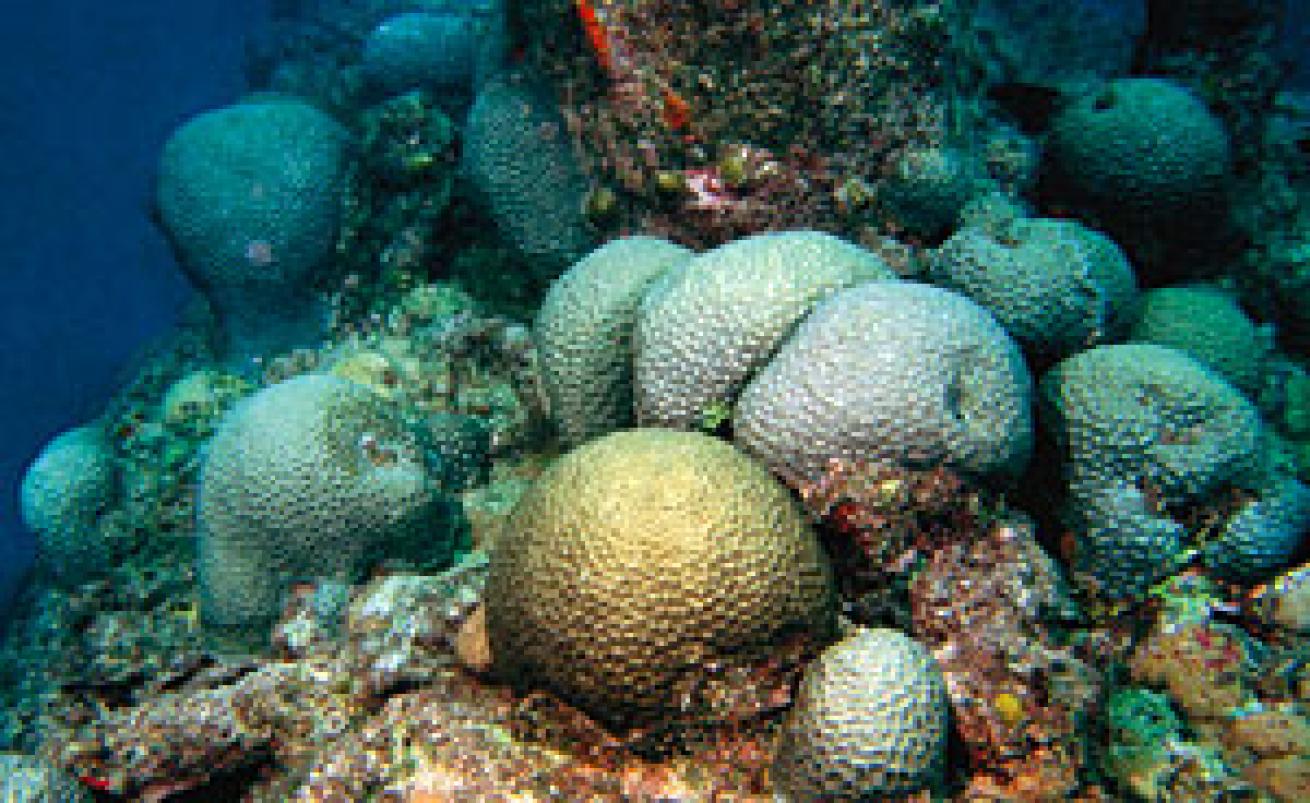Brazil's Abrolhos Bank Doubles in Size
By Travis Marshall
New reefs discovered by scientists along the east coast of Brazil double the known range of the Abrolhos Bank, a collection of volcanic islands and coral reefs off the Brazilian state of Bahia that comprise the largest and most biologically diverse reef system in the South Atlantic. And sections of the newly discovered reefs have up to 30 times the marine-life density, much of it endemic, as compared with the previously known parts of the Abrolhos Bank, says Guilherme Dutra, director of marine programs for Conservation International Brazil.
Diving at the Abrolhos Bank is characterized by large, mushroom-shaped coral formations called chapeiroes (big hats) found nowhere else in the world. The structures start in about 100 feet of water and reach almost to the surface, and nearly 50 percent of these corals are endemic. The signature species is an ancient brain coral from the Mussismilia genus, which dates to the Tertiary Period, 2 to 65 million years ago. In 1983, Brazil created its first national park around the islands of the Abrolhos Archipelago, about 40 miles offshore, to protect this unique environment.
Divers can visit the park and its surrounding reefs via the town of Caravelas--about 575 miles from Rio de Janeiro--on day or overnight trips. Along with endemic marine life and unique coral structures, three popular wrecks--the Rosalinda, Santa Catharina and _Guadiana_--attract divers here, and from July to December, humpback whales from the Antarctic gather at the bank to mate and nurse their young.
By Travis Marshall
New reefs discovered by scientists along the east coast of Brazil double the known range of the Abrolhos Bank, a collection of volcanic islands and coral reefs off the Brazilian state of Bahia that comprise the largest and most biologically diverse reef system in the South Atlantic. And sections of the newly discovered reefs have up to 30 times the marine-life density, much of it endemic, as compared with the previously known parts of the Abrolhos Bank, says Guilherme Dutra, director of marine programs for Conservation International Brazil.
Diving at the Abrolhos Bank is characterized by large, mushroom-shaped coral formations called chapeiroes (big hats) found nowhere else in the world. The structures start in about 100 feet of water and reach almost to the surface, and nearly 50 percent of these corals are endemic. The signature species is an ancient brain coral from the Mussismilia genus, which dates to the Tertiary Period, 2 to 65 million years ago. In 1983, Brazil created its first national park around the islands of the Abrolhos Archipelago, about 40 miles offshore, to protect this unique environment.
Divers can visit the park and its surrounding reefs via the town of Caravelas--about 575 miles from Rio de Janeiro--on day or overnight trips. Along with endemic marine life and unique coral structures, three popular wrecks--the Rosalinda, Santa Catharina and _Guadiana_--attract divers here, and from July to December, humpback whales from the Antarctic gather at the bank to mate and nurse their young.







